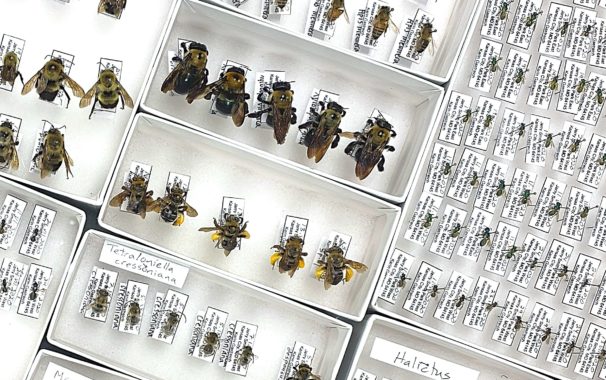“I was an award-winning participant in the Greater Kansas City Science and Engineering Fair back when I attended Shawnee Mission West High School in the 1980s,” said Avila Professor Karin Gastreich, Ph.D. “That was the experience that launched my career in science.”
At Avila, Gastreich mentors students to help launch their science careers by inviting them to work in her lab as part of the Capstone Program and completing independent research projects. “In this way, over the years, many students have contributed to my ongoing research program by completing different parts of the work,” said Gastreich.
Gastreich recently returned to her roots and mentored Zoe Dial, a Blue Valley North West High School student. “I first discovered her while reading one of her scientific articles, ‘Remnant Prairies and Organic Gardens Provide Complementary Habitat for Native Bees Within a Midwestern Urban Matrix,’ for school,” said Dial. “I knew I wanted to do a research project involving bee conservation in urban environments, so Dr. Gastreich’s research focus and location in Kansas City piqued my interest.”
Dial earned several awards at this year’s Greater Kansas City Science and Engineering Fair for her research–the same science fair that launched Gastreich’s career. “It was very exciting to have the opportunity to pay it forward by bringing an area high school student into my own lab. Zoe was a very hard worker, and her recognitions are well-deserved,” said Gastreich.
Dial’s research, “Urban Prairie Remnants as Important Habitats for Native Bees of the Family Apidae: An Analysis Across Three Seasons,” focuses on bees of the Apidae family in remnant prairies versus reconstructed prairies across 2018-2020. Her fieldwork took her to Jerry Smith Park, located in southern Kansas City. In the lab, Dial labeled and analyzed the data from 2020. One goal of her research project was to use a greater amount of evidence to make connections between the 2020 data and the 2018-2019 data.
Gastreich has been studying bees since 2006. She has been working in collaboration with KC Wildlands/Bridging the Gap, the Missouri Department of Conservation, and KC Parks to monitor the native bee community in Jerry Smith Park since 2018. Gastreich coordinates with the groups that manage the park to determine what studies should be done and how and then shares her data with them so they can use the data to make management decisions.
“To my knowledge, I’m the only biologist conducting studies of native bees in the urban environment of KCMO. Across the country and the world, however, many scientists are working on native bees,” said Gastreich.
“This was my first research project ever, but Dr. Gastreich’s guidance and support made me feel like it was not such a large task to take on. Additionally, my experience with her has solidified my interest in pursuing a career in scientific research and learning more about the biological and ecological sciences in college,” said Dial.
After graduation, Dial will be attending Colorado State University in Fort Collins and plans to double major in Science (biology, physics, etc.) and Creative Writing. She plans to continue her research and eventually pursue a graduate degree.

